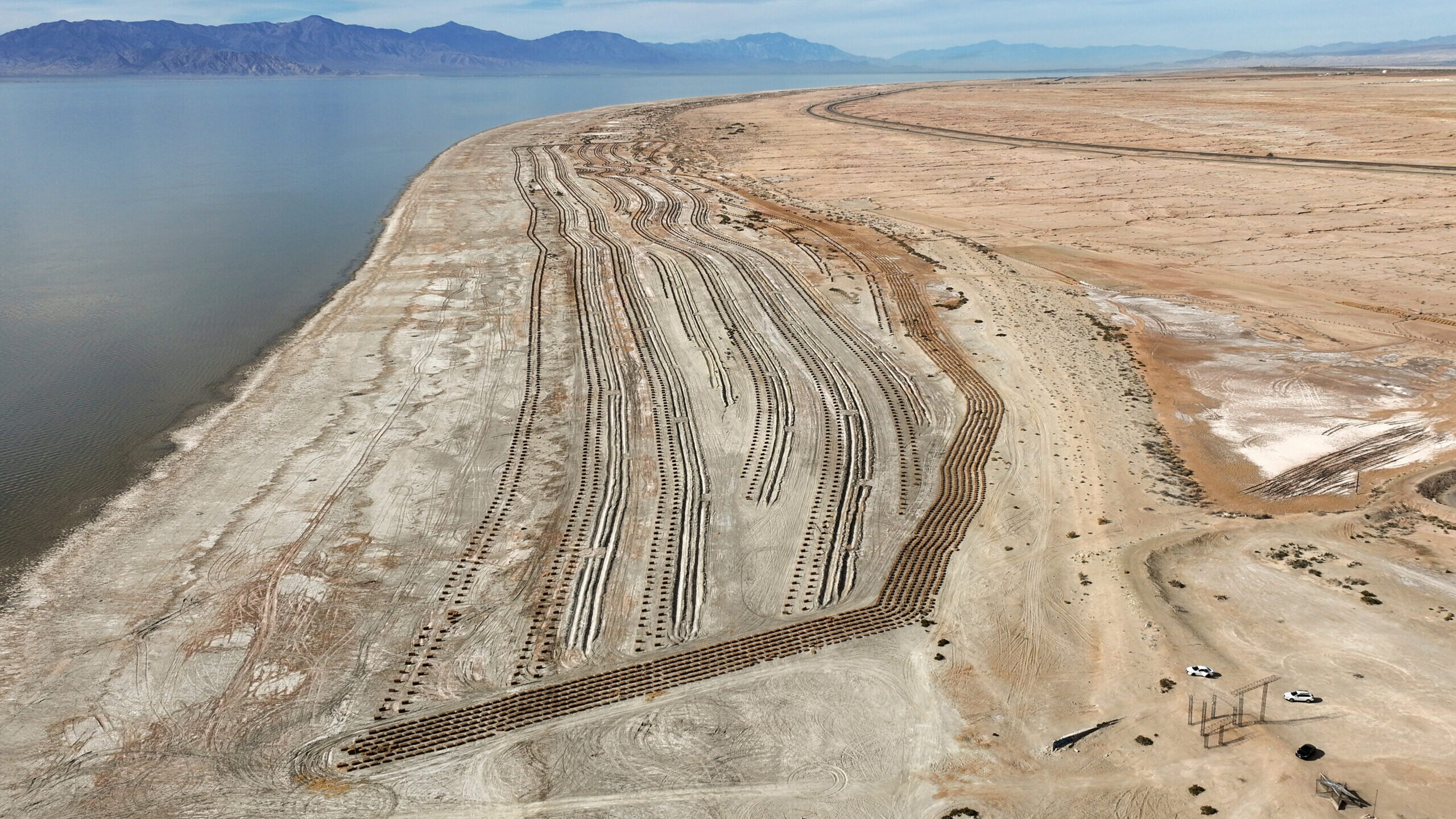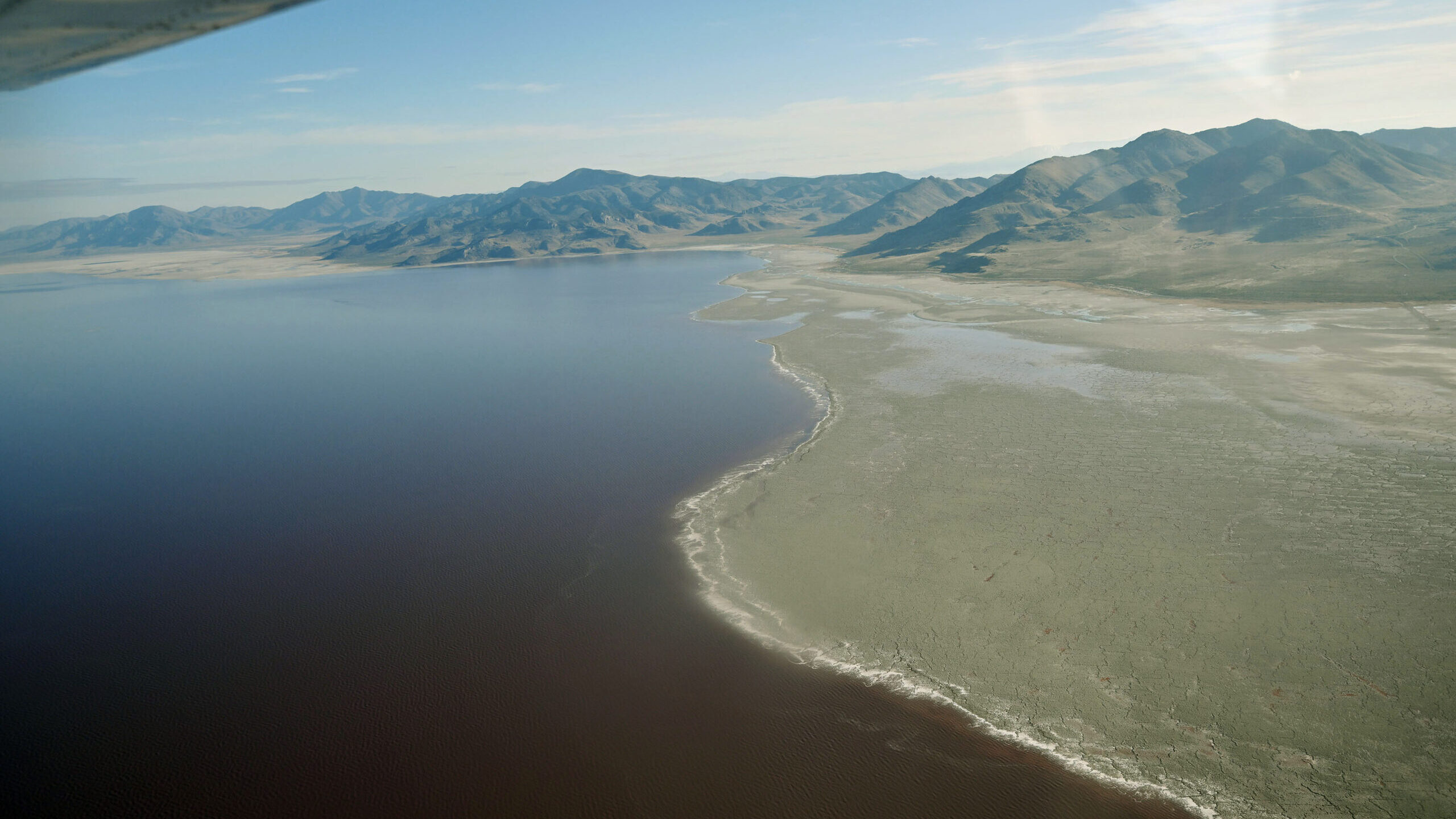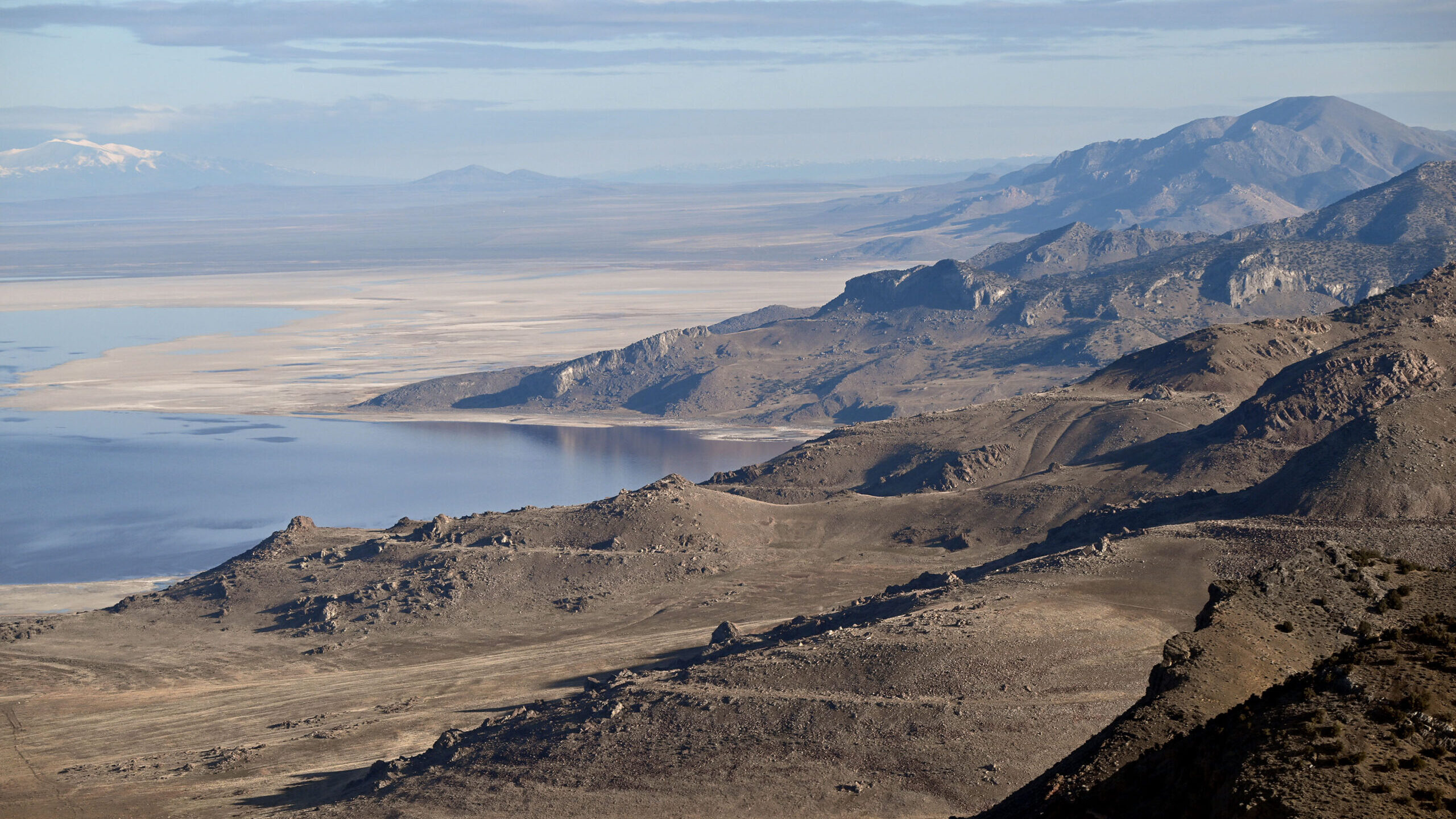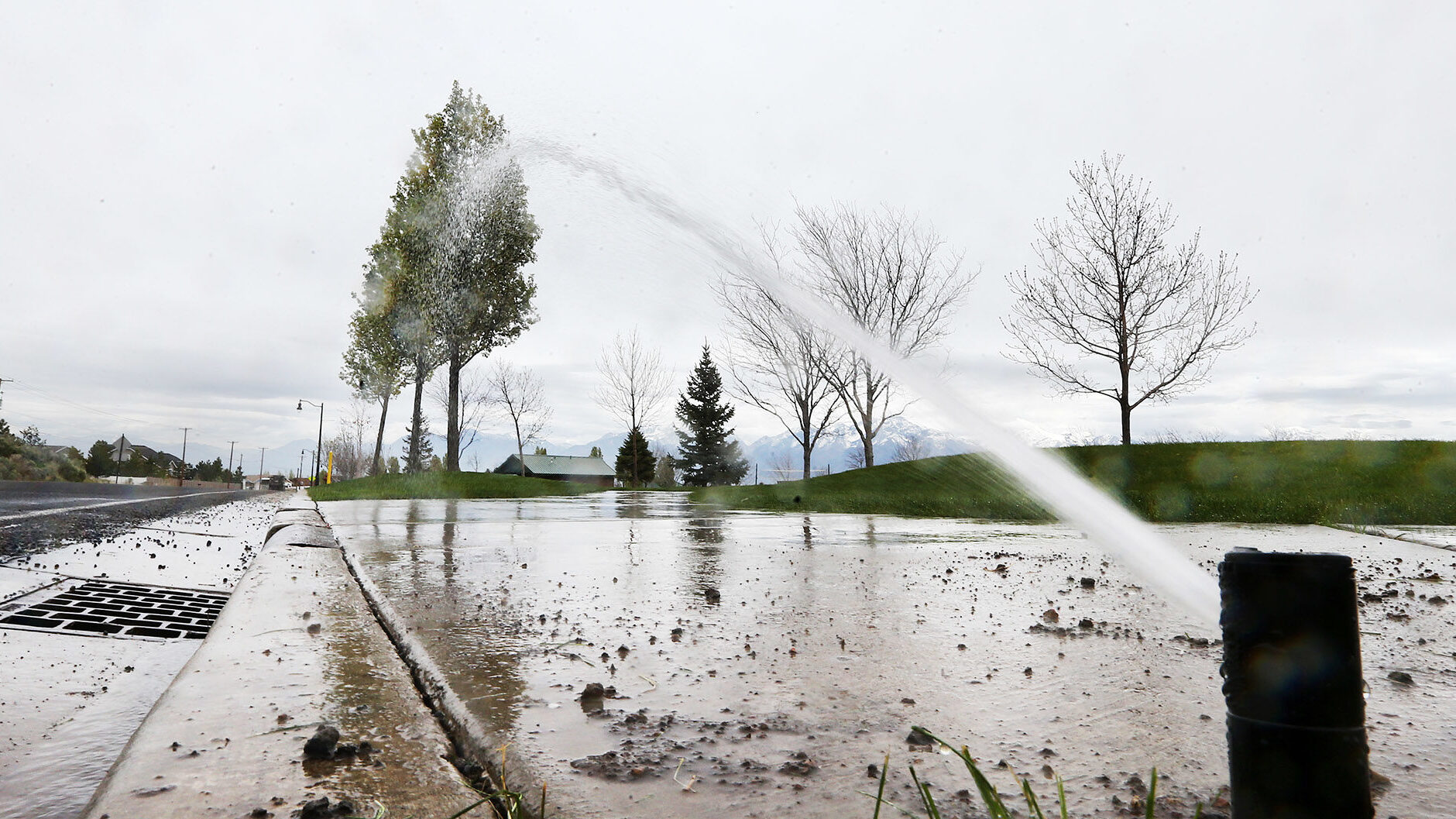Study shines more light on toxins in Great Salt Lake dust
Nov 20, 2023, 8:30 AM
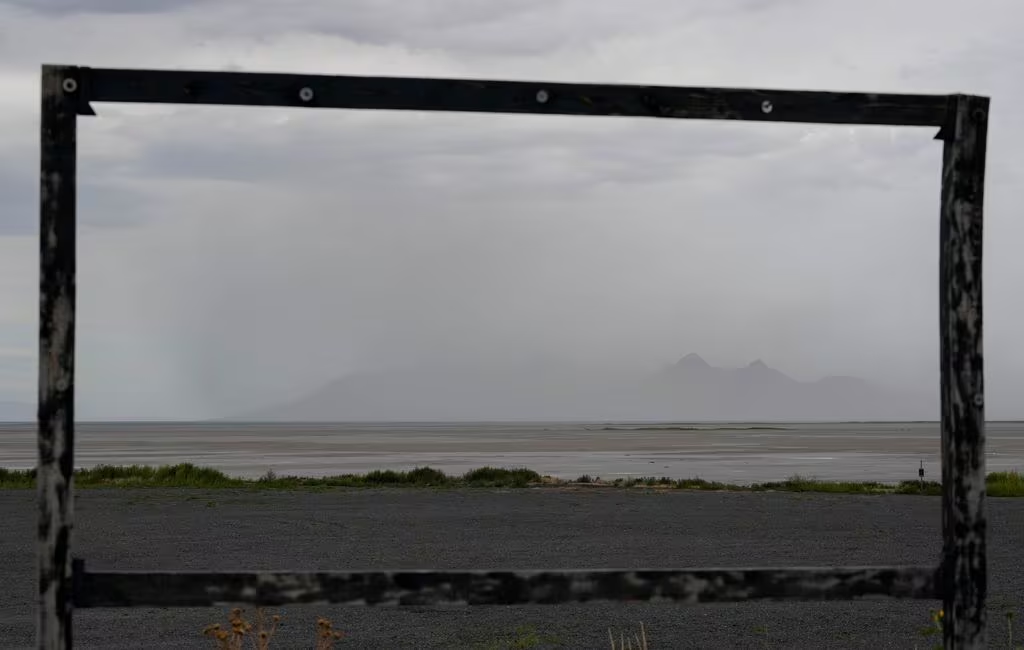
Framed by dust, strong winds blow fine particulate matter obstructing the view of Antelope Island on the Great Salt Lake Friday, Sept. 1, 2023. (Francisco Kjolseth, The Salt Lake Tribune)
(Francisco Kjolseth, The Salt Lake Tribune)
This article is published through the Great Salt Lake Collaborative, a solutions journalism initiative that partners news, education, and media organizations to help inform people about the history and the plight of the Great Salt Lake.
SALT LAKE CITY – Contaminants from toxic algal blooms may be blowing in the Great Salt Lake’s dust.
Researchers with the Jackson Hole, Wyo.,-based Brain Chemistry Labs published a study in the journal Toxins this month. They found cyanotoxins in both air samples and dried lakebed sediment samples collected in the summer and fall of 2022. The group was particularly interested in a compound called BMAA, which it calls a “risk factor” for amyotrophic lateral sclerosis, or ALS. ALS affects the nervous system, causes mobility issues and can be fatal.
“The threat posed by the inhalation of BMAA-laced dust remains unclear,” the group wrote in a news release. “What is clear, however, is the urgent need for comprehensive studies to determine the potential increase in ALS risk due to exposure to the Great Salt Lake dust.”
Researchers who regularly survey the Great Salt Lake, however, have raised concerns over the study. For one, the link between BMAA and ALS is for now hypothetical with no scientific consensus.
Brain Chemistry Labs, also called the Institute for EthnoMedicine, is hyper-focused on BMAA. It worked on developing a treatment that uses zinc to chelate BMAA from the body, according to its website.
The group did not receive external funding for its Great Salt Lake research. Kevin Perry, an atmospheric sciences professor at the University of Utah, called that a “potential red flag” and possible conflict of interest.
“There are lots of other little things that bug me as well,” Perry wrote in an email after reviewing the study. “For example, the abstract focuses on the identification of BMAA in air and soil samples, yet the positivity rate for these measurements was exceedingly low.”
The institute’s director and an author of the paper, Paul Cox, agreed in an interview that the positivity rate for BMAA was low.
“What we’re concerned about is that it exists at all,” Cox said.
He said Brain Chemistry Labs hasn’t participated in BMAA chelating treatment trials since around 2010.
Regarding his study’s lack of external funding, Cox said his organization is a nonprofit.
“We didn’t have time to go through regular grant cycle in 2022” for the Great Salt Lake BMAA analysis, Cox added. “We felt this was such urgent research.”
Brain Chemistry Labs also did not make its data publicly available, which is a common practice. And the study was not specific, Perry said, about where it collected its air and sediment samples.
“It is impossible,” the professor said, “for the results to be independently tested and verified.”
Cox said he did not include GPS coordinates for his sample locations because “it would have taken up more space” in the paper. But he said he’s happy to provide that information and data to other scientists.
The study also got the taxonomic name wrong for the lake’s brine shrimp.
Still, Toxins is a reputable journal that’s peer reviewed.
“Thus, the results can’t be dismissed out of hand,” Perry said.
And no amount of dust pollution is good for public health, regardless of what’s in it. Research from Perry and others have found the Great Salt Lake’s dust does contain an array of alarming materials, including heavy metals.
Local scientists agree there’s a need to better understand biological contaminants blowing from the lake’s vast exposed bed as well.
“The fact that these cyanotoxins are there,” said Brigham Young University ecology professor Ben Abbott, “is absolutely a concern.”
The Great Salt Lake currently has about 15 dust events each year, even after a record amount of runoff last spring.


